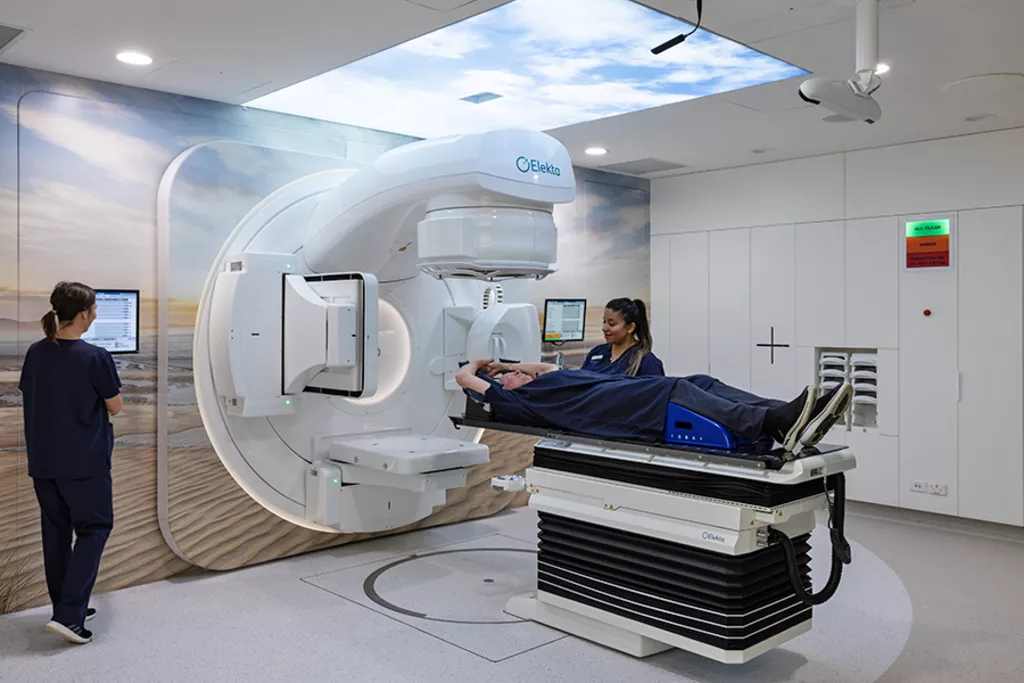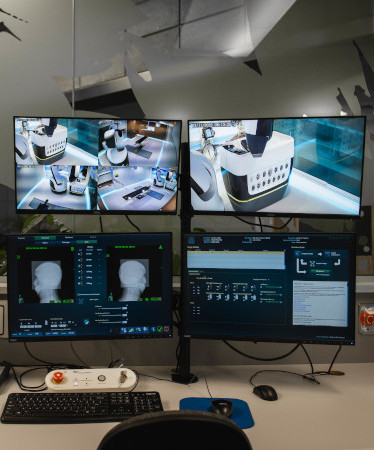What is Radiation Therapy?

Radiation therapy is a treatment using high powered x-rays which are aimed specifically at a cancer site. These x-rays damage DNA (genetic code) in cancer cells, with the intention that they die. Radiation also affects DNA in healthy cells which can cause side effects but these are well managed and usually repair over time. Advanced techniques and technologies like those used at Auckland Radiation Oncology (ARO) aim to minimise dose to normal body tissues and reduce side effects significantly. Any possible side effects from radiation therapy will be discussed with you before starting treatment.
There are several types of radiation therapy machines but the most common is called a linear accelerator. A linear accelerator can be positioned at a number of stationary angles or has the capability of moving around during treatment delivery. The machine can come close but will not touch you, nor will you see or feel radiation being delivered.
ARO is the only radiation oncology provider in New Zealand to offer CyberKnife. CyberKnife is a robotic radiation device that can target tumours with greater accuracy, minimising damage to surrounding healthy structures and organs and reducing treatment time for cancers such as prostate cancer from 20 days to 5 days.
When it comes to radiation therapy as a form of treatment, there are many elements to consider. The type, size, shape, and location of the cancer, your general health, and any medical treatments you have undergone, or have planned.
In more detail
The intent of radiation therapy is either curative (radical) or palliative.
Curative treatment is designed to put cancer into remission whereas palliative radiation therapy is about providing a better quality of life by relieving pain and cancer symptoms.
In order for the treatment to be most effective, beams of radiation (combined) need to cover the whole cancer/target as well as a small margin around it. Radiation therapy is administered in small doses, or sessions called fractions which allows time for healthy cells to recover. Radiation oncologists prescribe treatment which includes the amount of radiation (dose), the number of fractions, the timing of fractions, and exactly where the treatment is going to achieve the intent of treatment. All is monitored on a Record and Verification system. Administration, radiation therapists, physicists, nurses and radiation oncologists are all integral to the process.

Understanding Your Treatment
The Patient Pathway
We understand you may be anxious about having radiation therapy. Read about the patient pathway and what to expect before, during and after radiation therapy treatment. At ARO we work closely with your radiation oncologist to develop an individualised treatment plan for each patient.
Explore the patient pathway




